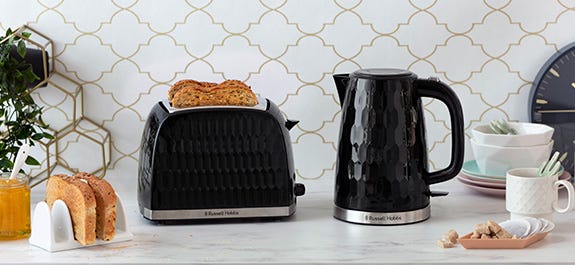Vacuum Cleaners
To maintain your vacuum machine we recommend that you wash your filter(s) at least once every 3 months and replace once a year.
If you have allergies or asthma, you need a vacuum cleaner with a HEPA (High Efficiency Particulate Air) filter so that when you vacuum, you will actually trap microscopic allergens instead of simply stirring them up and polluting the air.
HEPA filters are guaranteed to trap 99.97% of all particles 0.3 microns or smaller. Household allergens are generally one micron to 10 microns in size. For comparison, the diameter of a strand of hair is about 70 microns.
In general, canister vacuum cleaners are more versatile, lighter, and easier to maneuver. Canister vacuum cleaners also provide smoother transitions between different types of flooring.
Upright vacuums are best suited for homes with carpet in every room.
The simple answer is "Yes". Vacuum cleaners with dust bags are generally healthier for allergy sufferers because the bag keeps the dust out of the air.
However, not all bags are created equally. Some bags have large pores which allow allergens to escape the bag.
However, as long as care is taken when emptying the dust bin, bagless vacuum cleaners have much to offer allergy sufferers.
If you have allergies and use a bagless vacuum cleaner, we recommend that you empty the dust bin outdoors. We also suggest that you either have someone else empty it for you or wear a mask.
Not necessarily. The amperage of a vacuum cleaner's motor measures electrical current, not performance or suction power. The performance of the vacuum cleaner depends on the overall design, the filtration, and the air flow.
A turbobrush is air-driven, while a powerbrush is driven by electricity (usually an independent motor in the brush attachment itself).
Generally, you should use as many as seven strokes for high-traffic areas; three or four for lighter ones.
When you're vacuuming pile carpets and rugs, you should use the turbo brush, but when you're cleaning bare floors and walls, it's best to use the wall/floor brush.
To get dust out of drawers, heating and air-conditioning vents, and from under larger appliances, try the crevice tool.
For mattresses, upholstered fabrics, curtains and car interiors, use the upholstery attachment.
And to remove dust from blinds, lampshades and moldings, use the small brush.
If the filter shows signs of wear, or is excessively dirty or torn, it's time to replace it.
HEPA filters - ones that remove most dirt particles - should be changed after six months.
The owner's manual will tell you where the filter is located.
If you think your vacuum isn't cleaning as well as it used to or the brush roll has stopped turning, it may be time to change your belt.
First, shut off your vacuum and unplug its cord. It's not difficult to replace the belt as long as you have a screwdriver and a replacement belt.
For instructions for your specific vacuum, refer to your owner's manual or call the manufacturer's service center.
First, give it a full inspection. To do so, turn the machine off and unplug it. Then, check to see if the belt is worn or broken, or if the roller-brush won't move. Also, look for a full bag or any blockage that might be affecting the power of the machine.
Sometimes, new carpet can be a problem because it sheds more fiber and has a tendency to fill bags/bins quickly and clog the air stream.
If everything checks out and your machine still isn't working properly, call Russell Hobbs Customer Services on 0345 658 9700
Since Oriental rugs can be very fragile, you may have to use extra care when vacuuming them.
Still, to keep them in peak condition, they should be cleaned often. If you're using an upright vacuum cleaner, it's best to turn off the agitator brush (if possible). When approaching the fringe, tip up the front slightly and push it completely off the carpet. This cleans the fringe without catching it in the rotating agitator brush.
With a canister vacuum, use the bare floor brush for gentler cleaning of the carpet, and use an upholstery attachment for the fringe.
Also, don't forget to periodically turn the rug over so you can vacuum its underside.
Provided you have a good vacuum, powders shouldn't be a problem. For the best pick-up, start with a clean bag.
Since these powders can clog the bag, you'll probably have to change the bag afterwards (if using a bagged cleaner).













